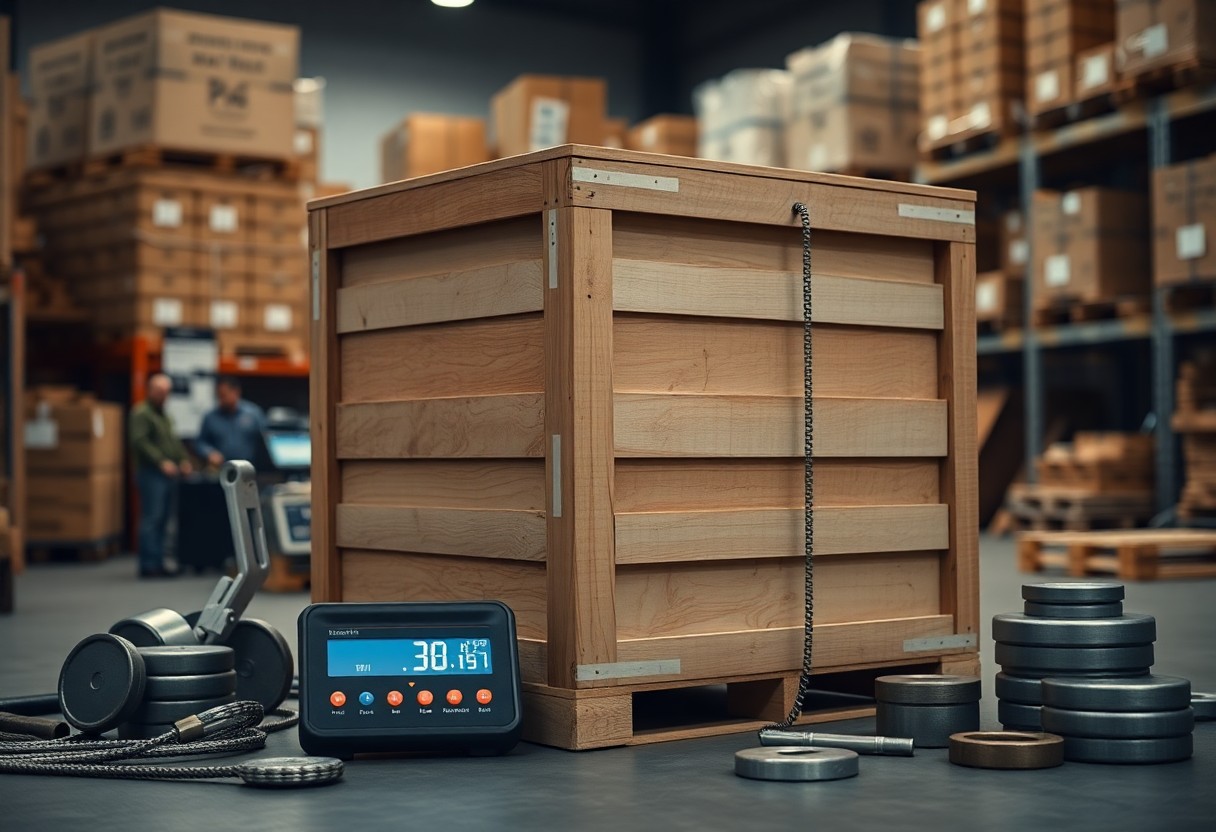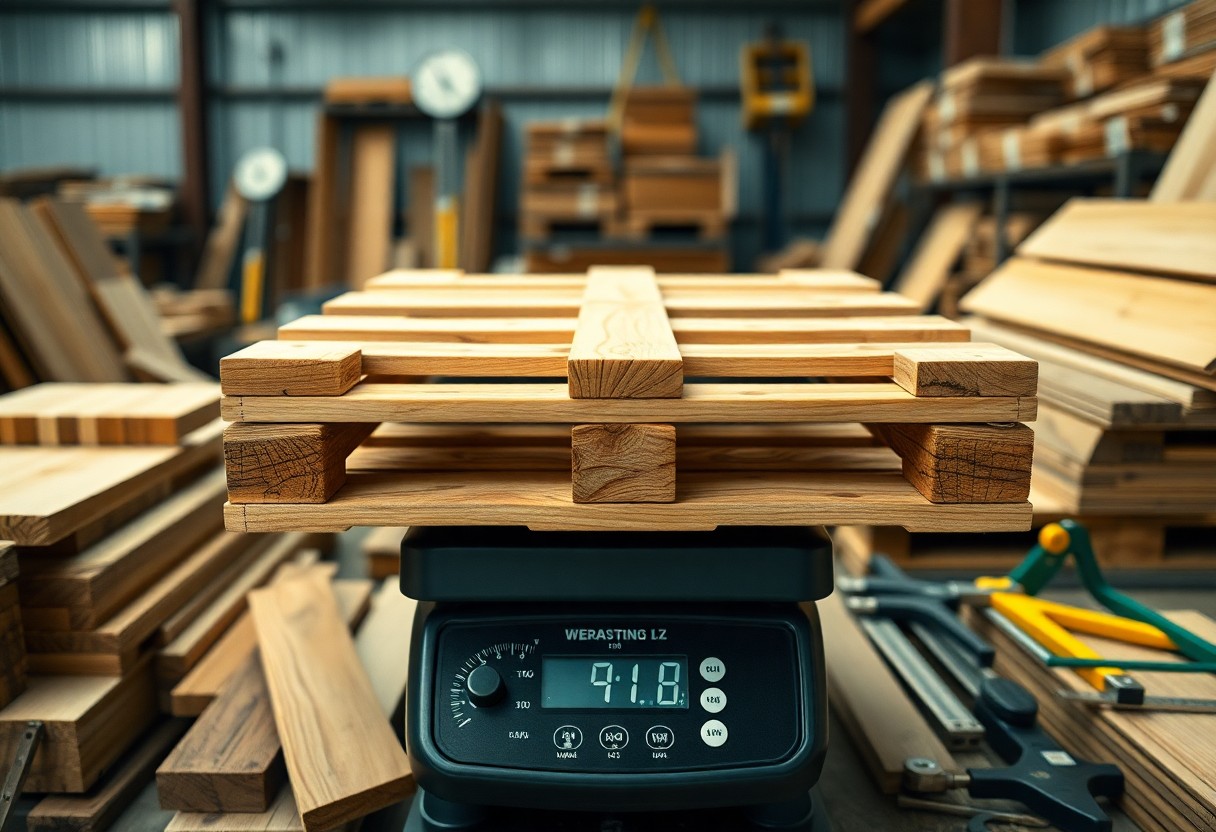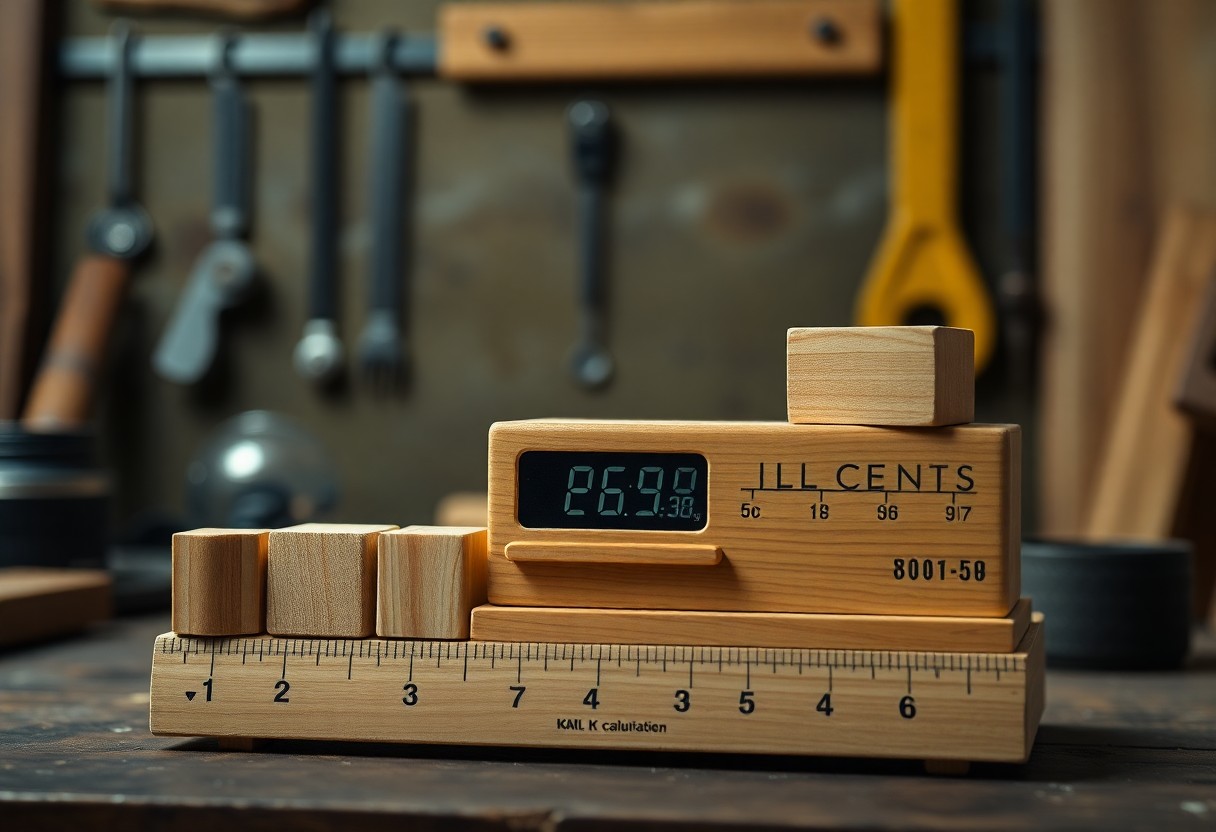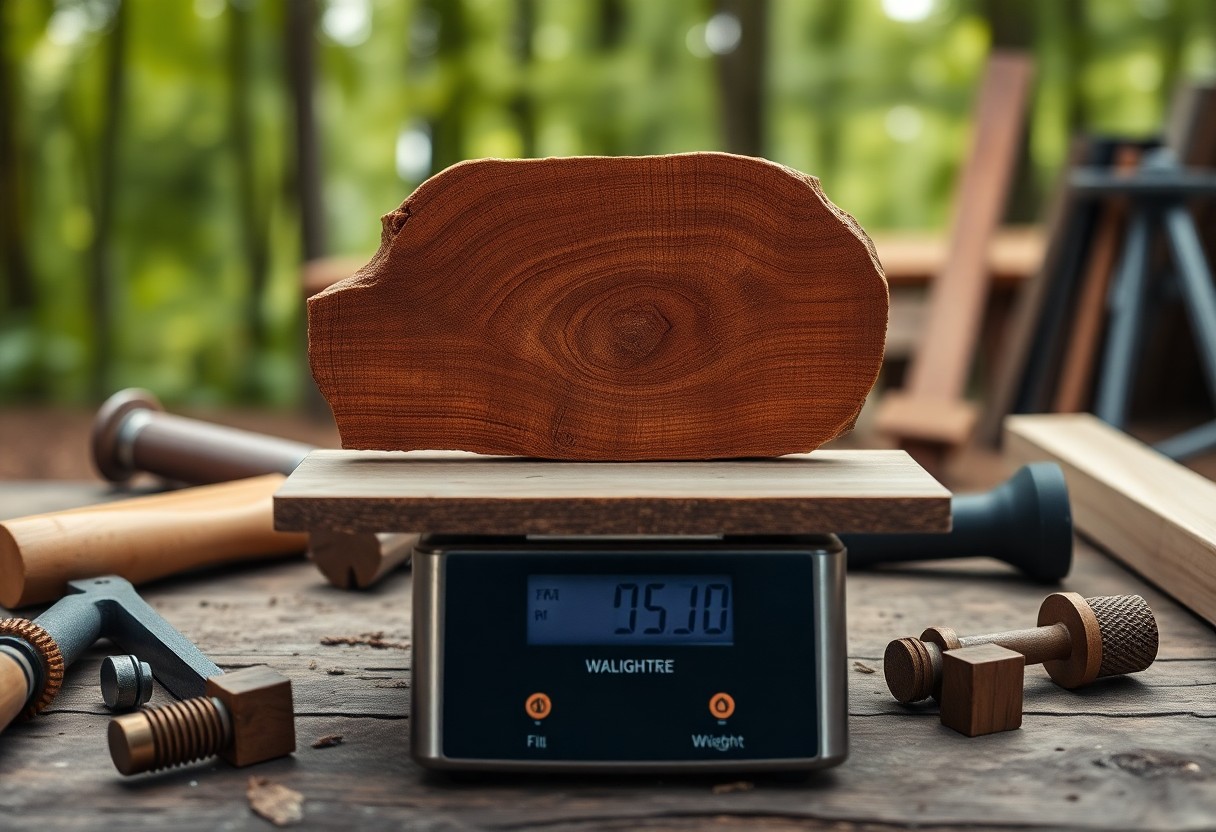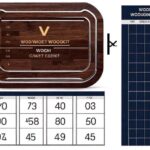Over time, accurately calculating the weight of wooden boxes has become necessary for various industries, including shipping, woodworking, and crafting. Understanding how to determine the weight of your wood boxes not only aids in proper shipping but also ensures safety and efficiency in handling.
In this guide, you will learn about the factors that influence the weight of your wooden boxes, how to use a weight calculator effectively, and the best practices for achieving consistent results.
Wood Box Weight Calculator
To effectively calculate the weight of your wood box, it’s important to understand wood density, which is the mass of wood per unit volume.
This property varies significantly among different species, informing not just weight but also how the wood will behave under various conditions. Knowing the density helps you choose the right type of wood for your project while also estimating shipping costs and overall project feasibility.
Wood Box Weight Calculator
Types of Wood and Their Densities
Against the backdrop of countless wood species, their densities provide a guide on their weight and usability. Here’s a simplified overview to assist you in recognizing some common types and their respective densities:
| Type of Wood | Density (lbs/ft³) |
|---|---|
| Pine | 22 |
| Oak | 45 |
| Maple | 38 |
| Cedar | 25 |
| Birch | 36 |
- Assume that denser woods will yield heavier boxes, affecting transport and handling considerations.
Factors Affecting Wood Density
Below your understanding of wood density, several factors can influence the density of wood, such as moisture content, age, and growth conditions.
These elements can determine how heavy, strong, or flexible your finished product will be, making your choice more informed. By grasping these factors, you can better select wood that meets your specific needs.
- Any adjustments in these factors may change the properties of the wood, affecting its suitability for your project.
Due to the intrinsic variability among wood species and their natural environments, density can fluctuate widely. For instance, wood from slow-growing trees often exhibits a denser structure compared to fast-growing ones. This variance can directly affect the performance of your projects, influencing durability and stability over time.
- Any choice you make based on this variability will ultimately reflect the wood’s ability to serve its intended purpose.
Wood Box Weight Calculator
It is important to understand how to calculate the weight of wood boxes accurately, as this information can be valuable for shipping, handling, and material estimation.
By using a simple formula and considering the dimensions and density of the wood, you can determine the weight and ensure that your project or delivery goes smoothly and effectively.
Wood Box Weight Calculator
Formula for Weight Calculation
On a practical level, the formula for calculating the weight of a wood box is straightforward: Weight = Volume × Density. To find the volume, multiply the length, width, and height of the box. After determining the volume, you can then multiply it by the specific density of the wood type you are using to find the total weight.
Step-by-Step Calculation Example
Any accurate weight calculation begins with a detailed measurement and understanding of your materials. Here’s a simple example to illustrate the process:Example Calculation
| Description | Value |
|---|---|
| Length (inches) | 24 |
| Width (inches) | 12 |
| Height (inches) | 6 |
| Wood Density (lbs/in³) | 0.03 |
| Volume (in³) | 1728 |
| Calculated Weight (lbs) | 51.84 |
In addition to the example above, you should consider any additional features of your wood box, such as hardware or additional reinforcements, which could slightly alter the final weight.
Knowing these details will help you prepare for transport and ensure that your projects are well-planned and executed without unexpected surprises. Always verify the calculated weight against the shipping or usage criteria specific to your needs.
Tools for Wood Weight Calculation
Some effective tools can streamline your wood weight calculations, ensuring you get accurate results quickly.
From online calculators to mobile apps, you have a variety of resources at your disposal that simplify the process and provide estimates based on your specific needs.
Online Weight Calculators
The internet offers various online weight calculators specifically designed for wood. These tools allow you to input dimensions, type of wood, and density, giving you quick and accurate weight estimates. You can easily access these calculators with just a few clicks, making them an excellent choice for anyone needing fast calculations.
Mobile Apps for Quick Calculations
Weight calculations for wood can also be done conveniently using mobile apps available on various platforms. These applications provide an intuitive interface for inputting wood dimensions and types, yielding immediate results for your projects.
Calculations done via mobile apps enhance your working efficiency, allowing you to compute wood weight on the go. Many of these apps include additional features, such as storage tips, density charts, and conversion tools, making them versatile companions for both professionals and hobbyists. By incorporating these apps into your workflow, you can save time and ensure accuracy in your projects.
Practical Applications of Weight Calculation
Unlike other materials, understanding the weight of wood boxes is crucial for various practical applications. Whether you’re shipping products, constructing furniture, or engaging in woodworking projects, knowing the weight ensures you make informed decisions that can affect cost, design, and functionality.
Accurate weight calculations can help you optimize material usage and overall project efficiency, ultimately resulting in better outcomes.
Shipping and Handling Considerations
Considerations for shipping and handling a wood box revolve around its weight, which directly impacts transportation costs and methods.
Lighter boxes may be shipped more economically, while heavier boxes may require special handling, leading to increased shipping fees.
Calculating the total weight enables you to select appropriate shipping solutions and ensure your packaging meets regulations to avoid delays.
Structural Integrity in Woodworking
Besides weight calculations aiding shipping, they play a significant role in ensuring the structural integrity of your woodworking projects.
The weight of your wood box influences the design choices you will make, particularly when considering load-bearing capabilities, stability, and overall durability.
Properly assessing weight helps you select the right materials and construction techniques, ensuring that your final product meets desired standards.
Handling the weight in woodworking projects requires attention to the balance between aesthetics and functionality. As you work with different types of wood, understanding how weight impacts the overall structure can inform your choices for joint construction and material selection.
This knowledge not only ensures your creations are visually appealing but also capable of withstanding their intended use without compromising their longevity or safety.
Common Mistakes in Weight Calculation
Not accounting for various factors can lead to significant errors in your wood box weight calculations. Many people overlook key variables such as wood volume and moisture content, resulting in inaccurate estimations. Understanding these elements is important for achieving reliable results.
Misestimating Wood Volume
By not measuring your wood box dimensions accurately or misunderstanding the volume formula, you may end up with incorrect weight calculations. Always ensure you double-check the height, width, and depth before performing any calculations.
Ignoring Moisture Content
Misestimating the moisture content in your wood can greatly affect its weight. Freshly cut wood contains more moisture, making it heavier than seasoned wood. This oversight can skew your weight calculations, leading to potential issues whether you are transporting, selling, or utilizing the wood.
Plus, the moisture content can vary significantly depending on the type of wood and environmental conditions, so it’s wise to check local guidelines or conduct tests. Adjusting for this variable will enable you to create a more accurate weight estimate, ensuring you optimize your projects and resource management effectively.
Tips for Accurate Measurement
Now, to ensure your wood box weight calculations are precise, focus on these important tips:
- Use a reliable measuring tape or ruler.
- Measure in a straight line, avoiding any curves.
- Take multiple measurements and use the average to increase accuracy.
- Double-check your numbers before making any calculations.
Perceiving these details will lead to better results.
Measuring Techniques
Behind every accurate weight calculation lies proper measuring techniques. It’s important to establish a consistent method for measuring the dimensions of your wood box. Ensure that you measure from the inside edges for internal volumes and the outside edges for total weight. Being systematic in your approach can minimize errors and lead to more reliable outcomes.
Using Correct Units of Measurement
By selecting the right units of measurement, you can simplify your calculations significantly. Always choose standard units such as inches, feet, or centimeters for length and pounds or kilograms for weight to maintain uniformity.
Plus, you should decide on a standard unit based on your preference or the usual practices in your region. Consistently using the same units throughout your measurements will prevent confusion and miscalculations. Whether you opt for the metric system or the imperial system, sticking to one will streamline your calculations and enhance the overall accuracy of your weight estimations.
Summing up
Upon reflecting, you can see how the Wood Box Weight Calculator serves as an necessary tool in your woodworking or construction projects.
By providing you with accurate weight estimates based on dimensions and wood type, it helps you make informed decisions about material selection and transportation.
Utilizing this calculator can enhance your project planning, ensuring efficiency and precision while managing costs. Embrace the benefits of this handy resource for your next venture.

